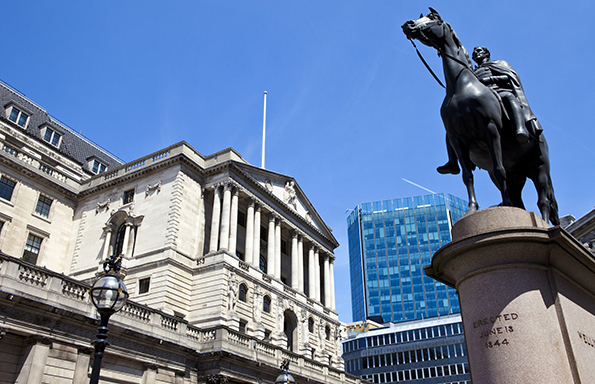
Costas Milas is Professor of Finance in the University of Liverpool’s Management School
Financial markets were wrongfooted both in November and in December 2021. Nevertheless, my monetary policy tool discussed in The Conversation, turned out to be (almost) bang on: it predicted an interest rate rise from 0.10% to 0.20%. The Bank of England’s interest rate went up to 0.25% instead.
What about the forthcoming interest rate decision on 3 February 2022? Financial markets expect the Bank of England to raise its policy interest rate to 0.50%. Third time lucky for financial markets?
My monetary policy tool predicts interest rates based on three important variables: (a) the “infectious disease equity market volatility tracker”, (b) the Office for Budgetary Responsibility (OBR) output gap (that is, output relative to equilibrium) and (c) the two-year ahead inflation forecast relative to the 2% inflation target. Omicron considerations have kept the infectious disease volatility tracker in early 2022 close to its December 2021 value.
The Omicron variant is expected to trigger only a mild ‘hit’ on UK GDP on the argument that the economy has learnt to live with the virus. In line with OBR expectations, the policy tool assumes that the output gap drops from 0.7% in 2021Q4 to 0.4% in 2022Q1. With inflation currently at 5.4%, that is, the highest level for 30 years, the policy tool assumes that two-year ahead inflation reaches 2.43% in 2024Q1.
This is notably higher than the 2.11% prediction made by the Bank’s November 2021 Monetary Policy Report but consistent with my own analysis that the Bank has historically under-predicted two-year ahead annual inflation by an average of 32 basis points.
The interest rate prediction
Consequently, the policy tool predicts an interest rate rise from 0.25% to 0.40% which is slightly less than the 0.50% interest rate expected by financial markets. There are two ways to read this prediction.
First, 0.40% is sufficiently close to 0.50%, the latter being a more likely decision not least because the Bank of England has taken the view that Quantitative Easing (QE) “unwinding” will occur once the policy rate reaches 0.50%. In fact, raising the policy rate to 0.50% gives Bank of England an additional monetary policy tightening tool, QE withdrawal that is. Second, the tool’s suggestion of an increase by 15 basis points in the policy rate, which follows an equivalent increase (of 15 basis points) in December 2021, is arguably telling us that the model is hesitant to recommend a higher interest rate. This is in line with concerns by economists that inflation might start coming down quickly as supply-side bottlenecks recede.
Russia vs. Ukraine: The role of geopolitical risk
So it looks very likely that interest rates will go up again in February. Do not underestimate, however, rising geopolitical risk because of tensions in Ukraine. UK and Nato troops might be deployed in Easter Europe if Ukraine is invaded. Rising and perhaps persistent geopolitical risk is not a ‘friend’ of the (global) economy. Economic sanctions against Russia, if the latter invades Ukraine, will harm the Russian economy. What about so called “contagion effects” on European and US banks that have some exposure to Russian public and private debt?
The exposure of British banks and US banks to Russian debt is currently very low at 0.06 per cent and 0.37 per cent of their total global exposure, respectively. The exposure of German banks to Russian debt is slightly higher at 0.41 per cent. Hence, we should not worry too much about possible “contagion effects” through the banking channel. Nevertheless, can these considerations play any role towards delaying an immediate interest rate increase in the UK despite the fact that the Russia-Ukraine crisis puts upward pressure on international energy prices?
Whatever the decision of the Bank’s policymakers, history provides some intriguing information: The last time the Bank raised its policy rate in two successive meetings was in May 2004 (when the policy rate went up to 4.25%) and then again in June 2004 (when the policy rate went further up to 4.50%). At that time, UK inflation was “only” 1.5%, that is, three and a half times lower than the current inflation rate!
Professor Milas plans to update his policy tool and forecast the Bank’s interest rate twice or three times a year.